The Sony FE 4/70-200 G OSS is Sony’s answer to CaNikon’s very popular 4/70-200 lenses and covers a wide range of applications. For this review I used it for a year on my Sony a7II and gave it a thorough examination.
Image Samples
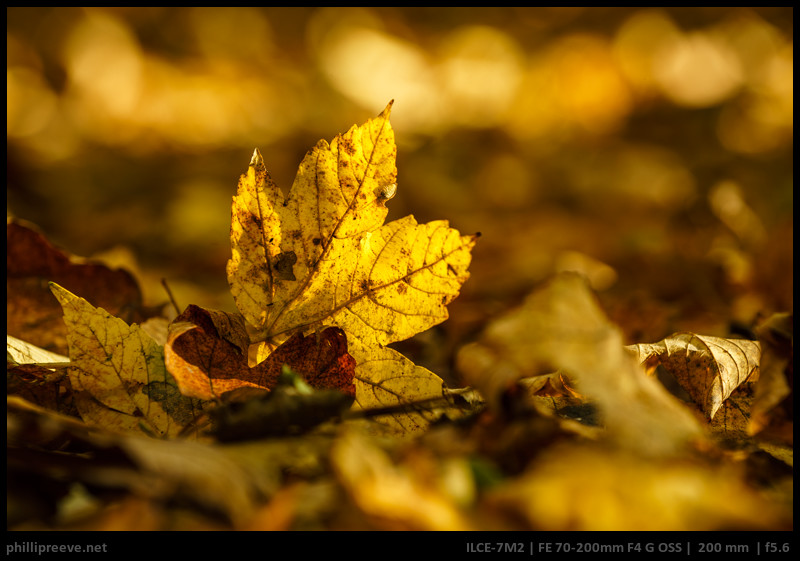
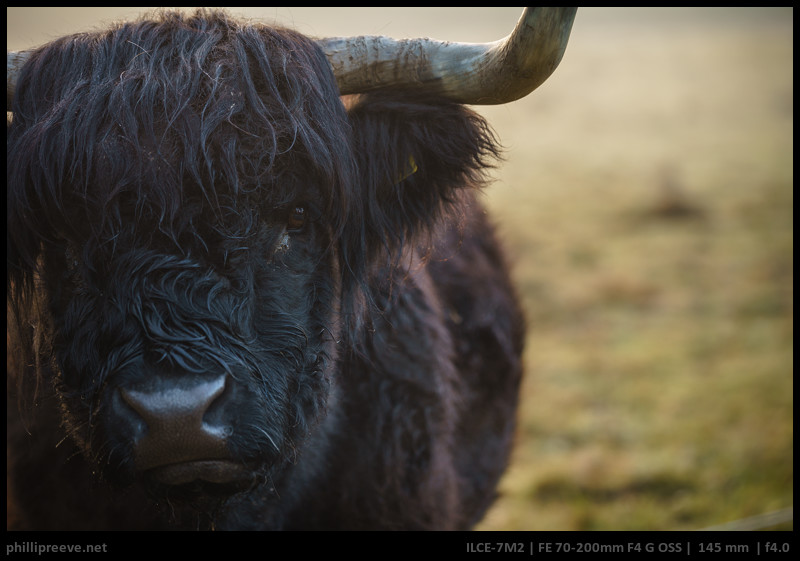
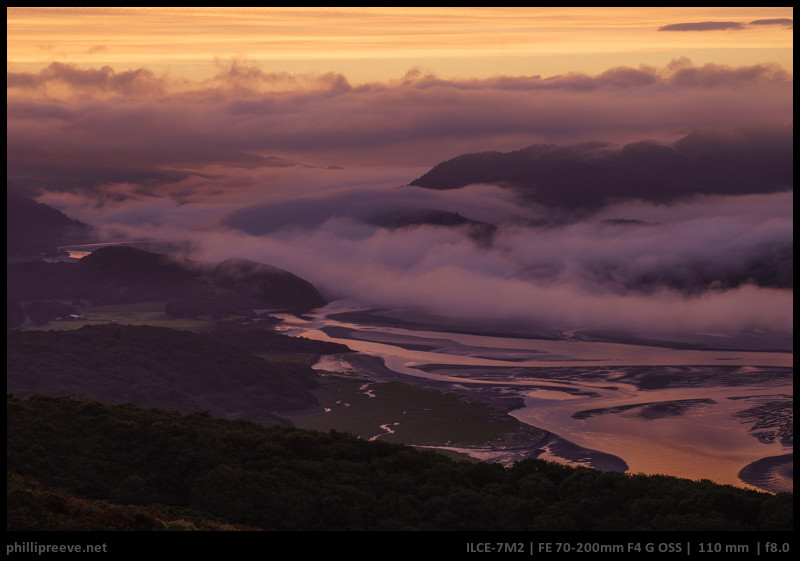
Specifications
| Diameter | 80 mm |
| Length | 175 mm |
| Filter Thread | 72 mm |
| Weight | 840 g |
| Max. Magnification | 1:5.5 |
| Close Focusing Distance from the sensor | 1 m |
| Number of aperture blades | 9 |
| Elements/ Groups | 21/15 |
Build quality and handling
Sony has a wide range of categories for their FE-lenses: ZA, G, GM and more basic lenses like the FE 2/28 or 1.8/50 which are quite different in appearance. I would say that the FE 4/70-200’s design is more durable and less fancy than that of the ZA lenses which have a metal hull which scratches easily. The G’s hull is made from plastics and focusing ring and zoom ring are rubberized. Markings are not engraved. Both rings have no noticeable play and a pleasant resistance. There is a bunch of buttons which work fine.
Unlike Canon, Sony claims no weather resistance, only “dust and moisture-resistant design” for their 4/70-200 and the lens does not have a gasket at the lens mount.
I bought my copy with an attractive rebate because it was lacking the hood so I can’t give you an assessment on the hood.
Auto Focus
The FE 4/70-200 G is a very fast focusing lens. For less challenging applications it performed well for me on my a7ii. It is not a very fast focusing camera though so when my subject was more challenging it often failed. For example when I tried to take a snap of this gull from a moving ship most images weren’t in focus but that is mostly a camera issue.
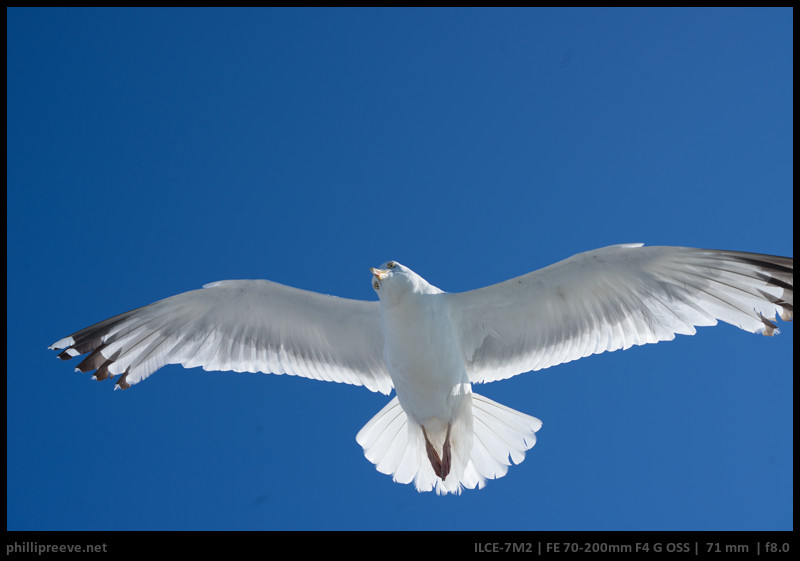
So my own assessment of the FE 4/70-200’s AF is limited by my camera. When Philipp Zieger who shoots with a a6500 asked me to borrow the lens to shoot a bike race I was happy to say yes. Here is his assessment of its AF-capabilities in a more demanding scenario with a more capable camera:
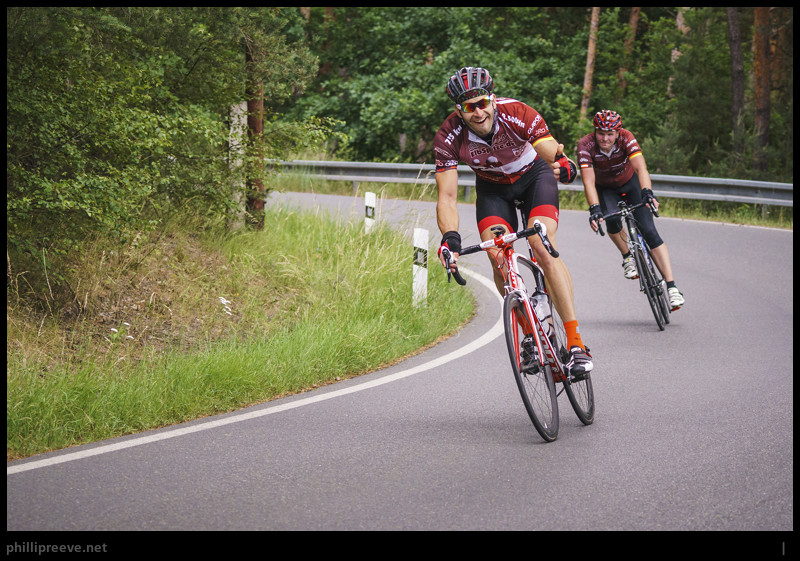
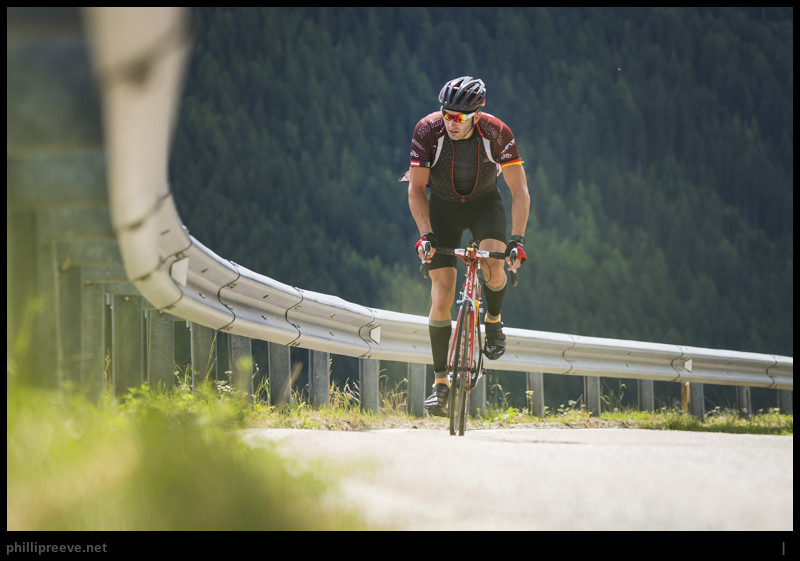
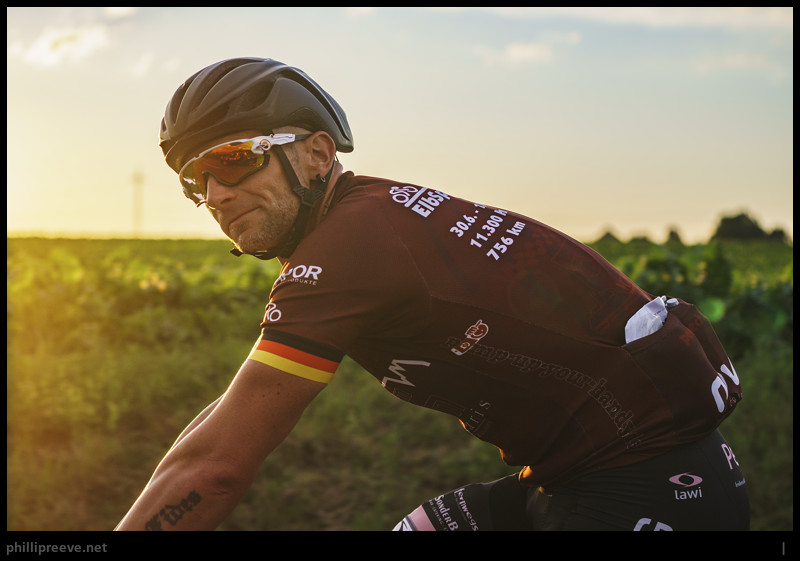
Manual Focus
The focusing ring feels nice. It is wide enough, well textured and offers a pleasant resistance. What I don’t like too much is the focus by wire implementation.
One problem here is that it matters how fast you turn the focusing ring. If I turn it by 80 degrees very fast the focus changes from 1 m to infinity. If I turn it slowly it takes more than 360 degrees (one full turn) to change focus from the close focusing distance to infinity.
In theory this sounds like a great idea because focusing should be either super precise or very quick, depending on what you need. But so far I have failed to get to a point were my I am able to use this subconciously, and I have used manual focus with Sony FE lenses for two years now.
The other problem is that there is a small lag between the moment when you turn the focusing ring and when the lens reacts.
I am used to manual lenses where the focusing ring is coupled directly to the focusing helicoid and I am faster and as precise with them. So manual focus works okay but it isn’t very enjoyable (says a hardcore manual lens user).
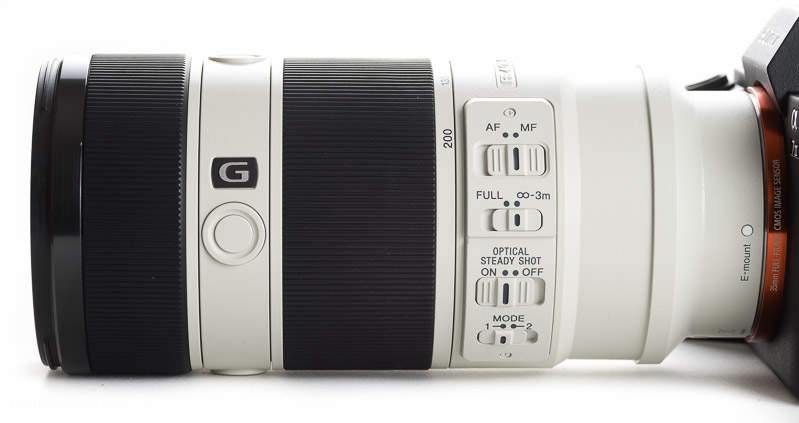
Hood
The G 4/70-200 usually comes with a nice and solid hood but I got mine with substantial rebate because it came without hood so I can’t report on it.
Size and Weight
The Sony 70-200mm f/4 is by my standards a large and rather heavy lens at 850g. If you include an adapter it is a bit shorter than CaNikons offerings so this is expected for a 4/70-200 but still it will take quite a bit of space in your camera bag. Personally I often found myself hesitating to put it into my bag because of it’s size. But it depends on your personal standards how much of an issue the size and weight will be to you.
Handling
On the camera handling is fine. Usually I support the lens with the palm of my left hand and operate zoom and focus ring with my fingers. In my experience the Sony 4/70-200 G is well balanced.
You also have four solid switches on the lens which make operation easier:
- A focus switch
- A focus limiter
- A switch to activate or deactivate the optical stabilizer
- A switch to change the stabilizer mode. Mode 1 is for normal use and Mode 2 for panning shots.
These switches override the camera’s setting. So when AF is deactivated on the lens you can’t activate it in camera.
There are also three focus stop buttons on the lens which you can reprogram to something more useful like eye-AF.
Tripod Collar
The Sony (unlike the CaNikon Variants where it is optional) comes with a tripod collar. I think on the smaller E-mount cameras it is needed more. And on first generation a7-series cameras or the a6000 with their weak mount I wouldn’t risk to use the lens on a tripod without it.
It is easy to remove and quite light weight and can be rotated to portrait orientation.
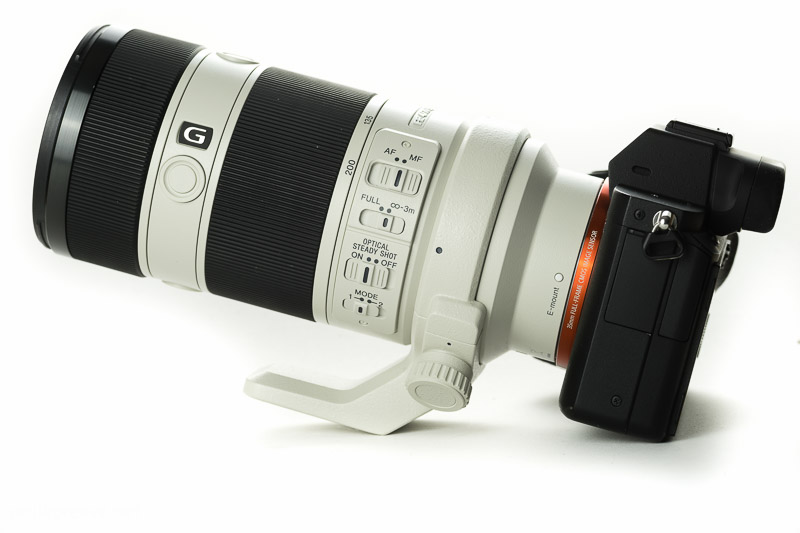
Stabilizer
The Sony FE 4/70-200 has an optical stabilizer so it is stabilized on any E-mount camera and not just those with an integrated stabilizer.
To be honest I wasn’t impressed by the stabilizers performance. For me it compensates only about two stops while competitors are good for four or more stops. In the field I had quite a few images where I thought that I was safe to take an image at 1/50 second but at home I had to discover that in fact my image wasn’t that sharp. So now I take several images to be safe.
Close focusing distance
Sony claims a 1m close focusing distance. Curiously the close focusing distance isn’t constant. Until around 175 mm it is indeed 1 m but at longer focal lengths it jumps to 1.35 m. So for the best reproduction ratio of 1:5.5 zoom in to 175 mm, at 200mm the minimal reproduction ratio is 1:6.25.
Optical performance
These results are based on the use with a Sony Alpha 7ii.
Flare Resistance
The flare resistance is quite good. I had to try really hard to provoke any ghosting or contrast loss and then all I got was a very small green blob.
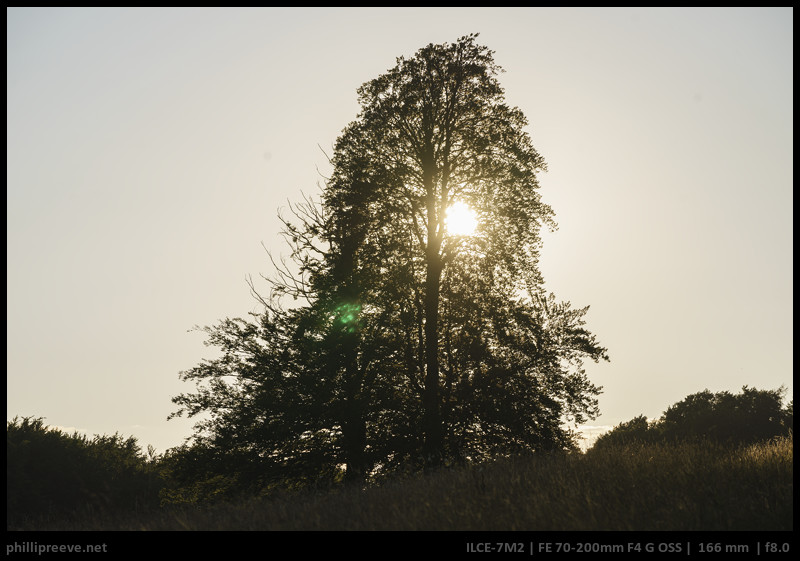
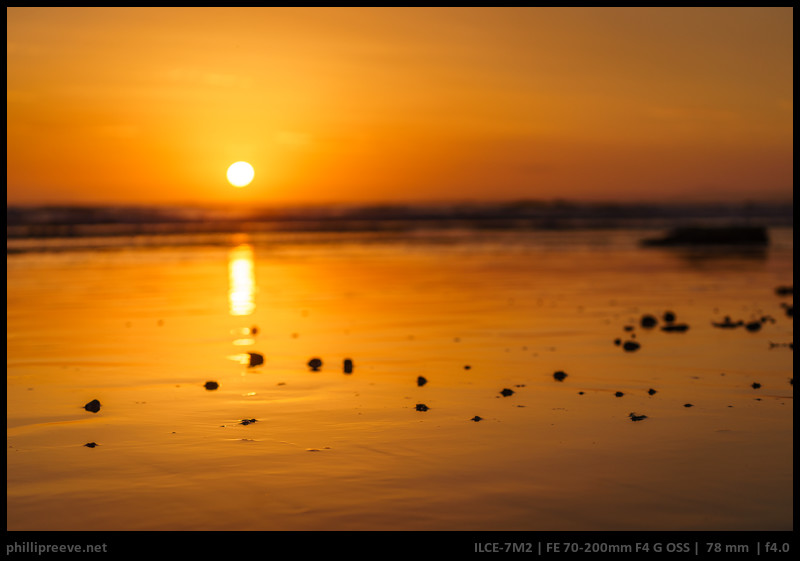

When the sun is just outside of the frame I got some nasty veiling flare. I don’t own the hood so I don’t know if it would have prohibited veiling flare in this image, probably it would since I could remove the flare by shielding the lens with my hand.
Bokeh
As always bokeh depends a lot on the conditions. For portraits you usually have a shallow enough DOF to get a very smooth background.
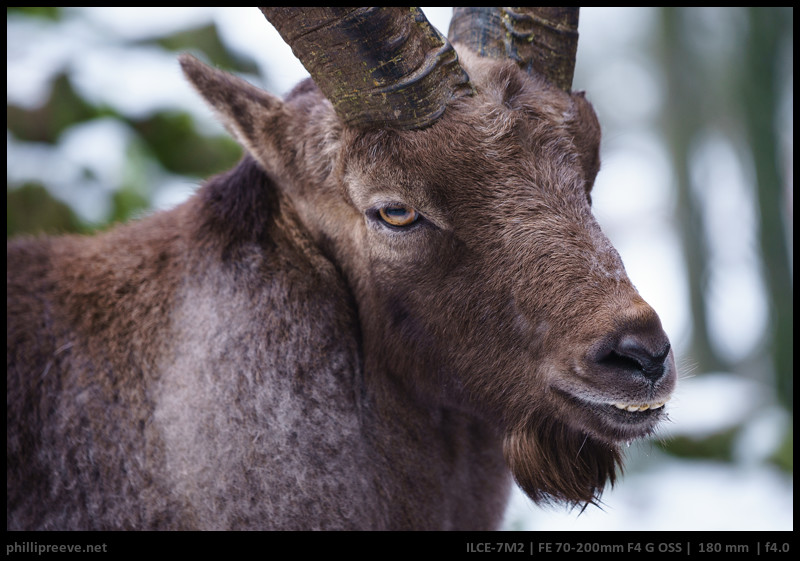
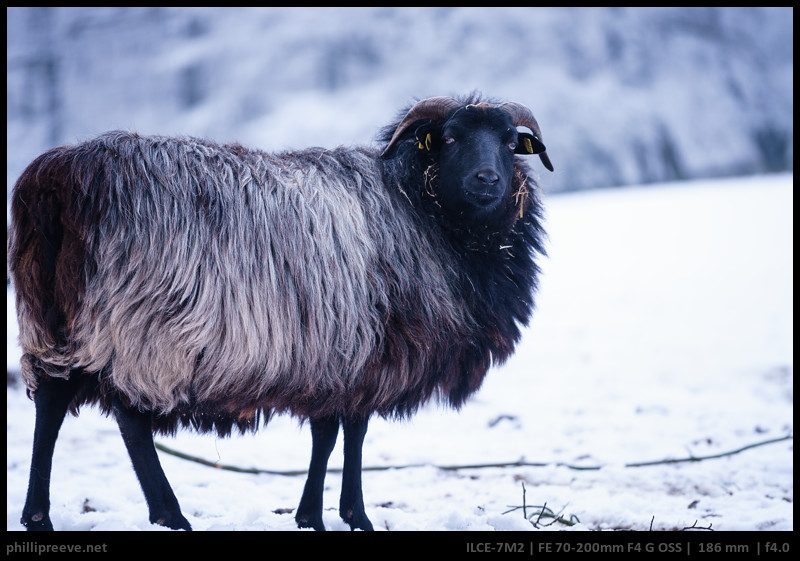
At longer distances and in the transition zone bokeh is a little more nervous.
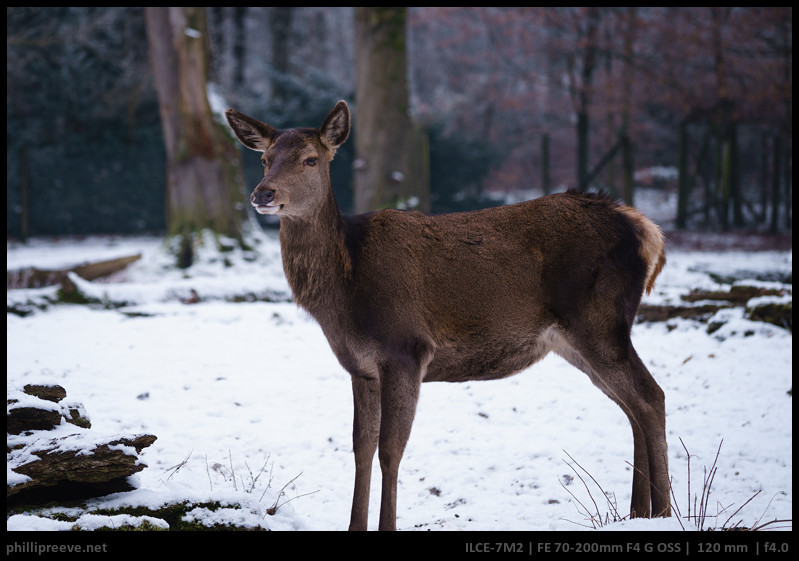
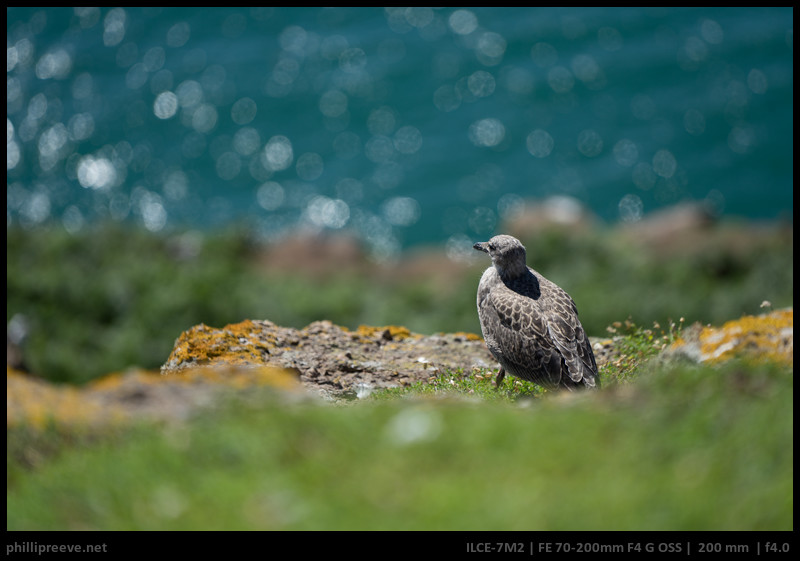
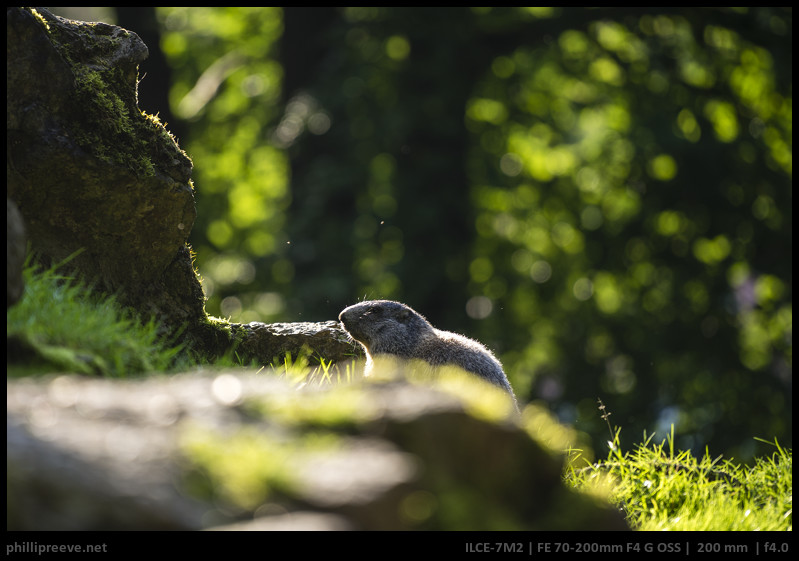
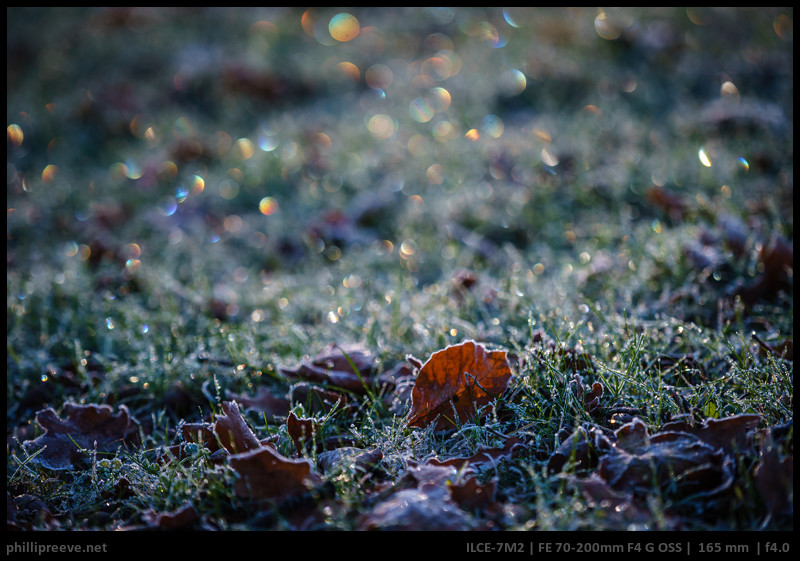
Thanks to 9 aperture blades oof-highlights stay round when you stop down. In the shot you can also notice traces of onion ring like structures.
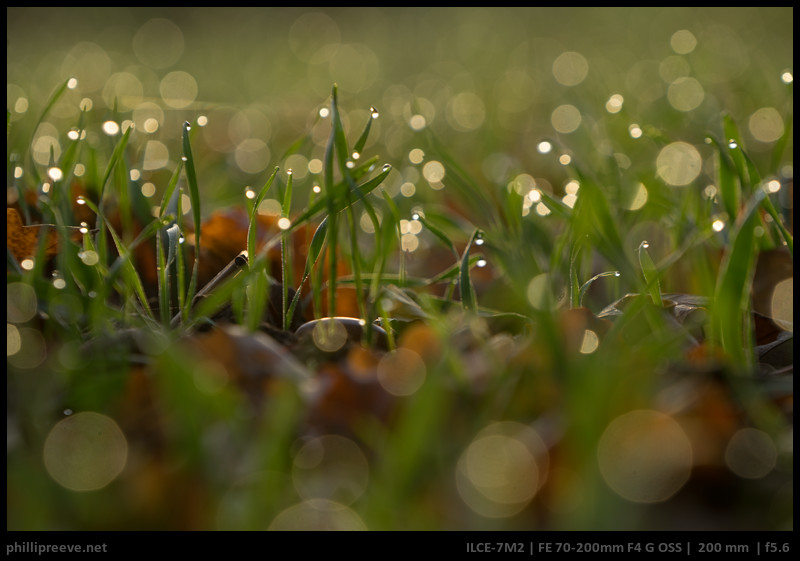
Foreground bokeh is pretty smooth:
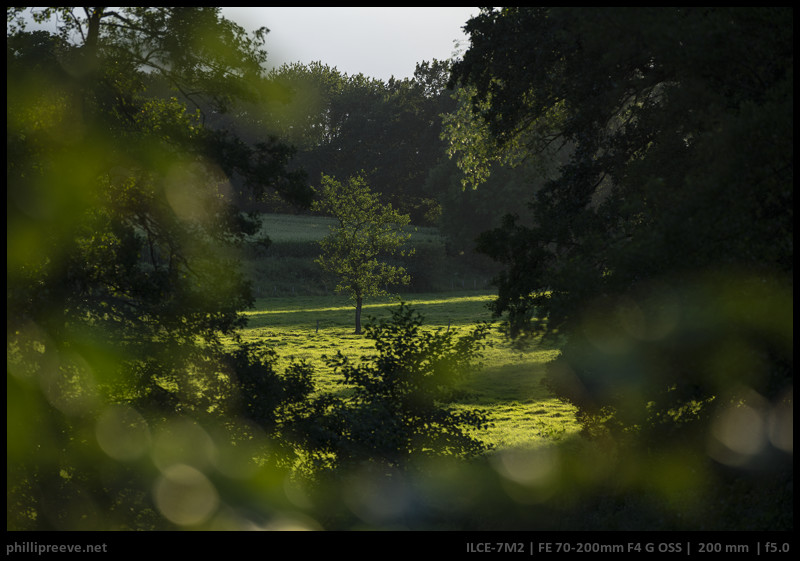
The cat-eyes-effect can be rather pronounced wide open:
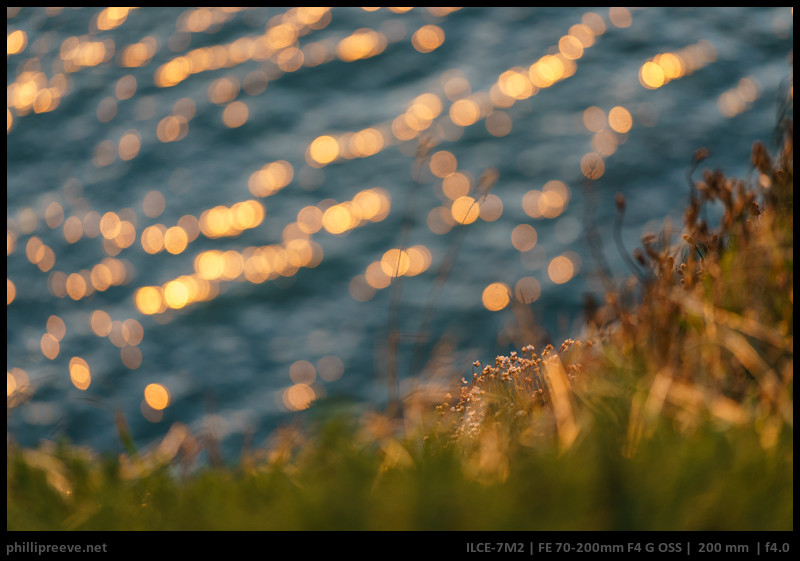
Chromatic Aberrations
Axial CA is corrected very well and only traces remain.

Lateral CA: Correction depends on the focal length. At 70mm and 200 mm the SEL70200G shows a moderate degree of lateral CA but at 100 mm and 135 mm there is hardly any lateral CA.
Vignetting
At 70 mm vignetting at f/4 is at moderate 1.3 stops and goes down to hardly noticeable 0.6 stops at f/5.6.
At 200 mm vignetting is slightly higher at 1.6 stops wide open and 0.8 stops at f/5.6 but negligible from f/8 (0.4 stops).
I think these figures are quite a bit higher than for CaNikon’s 4/70-200 lenses but still not excessive.
Distortion
Some barrel distortion at 70mm, almost zero distortion at 100mm, a little pincushion at 135mm and significant pincushion at 200 mm
Sharpness infinity
At any focal length the Sony 70-200mm F4 shows very good sharpness in the center from f/4 which improves a bit at f/5.6 where it is excellent.
The midframe is sharp at any aperture or focal length but for very good results you should stop down to f/5.6.
The corners are not sharp at f/4, especially at 100mm and below and you should stop down to f/8 for good to very good results.
Field curvature also plays a significant role. Here are 100% crops from the extreme corner at 70mm. First focused at the center and then focused at the corner.:
This means that for portraits you can expect better results than in my test and you should take it into consideration when adjusting focus for landscape images.
My copy is quite well centered for a zoom but from Roger Cicala at lensrentals.com we know that it among the Sony lenses with the highest variation. Be sure to check your copy when it arrives.
So all in all a strong performance, only the corners do not reach the excellent mark as a good prime would.
Applications
4/70-200 lenses are among the most versatile lenses you can buy. After a 24-70 they are probably the most popular zooms found in photographer’s bags. That is because they cover the range from short to moderate tele an can be used for a wide range of applications.
Portraits
Of course you won’t get a similar amount of background blur from the 4/70-200 as from a dedicated portrait lens as the Sony FE 1.8/85 if you use it at the wide end.
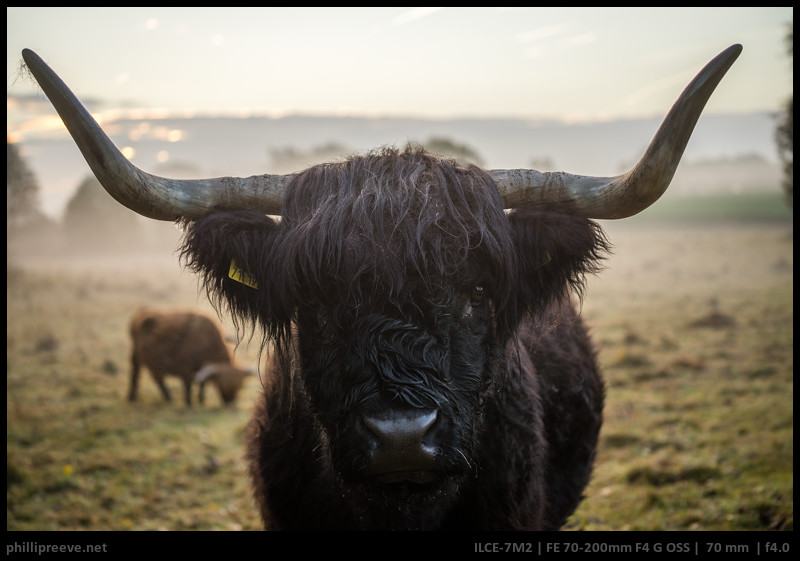
But if you zoom in you can trow your background out of focus completely. The quick AF, and very good image quality also come in handy. Your subject will also be impressed by your large lens. That is unless he/she/it is a complete oaf.
Reportage
Here the wide zoom range comes in handy. Optically I see no real limitations. The relatively slow aperture can be an issue though because you can’t isolate your subject much which can be an issue with unattractive background you often have to deal with when covering an event.
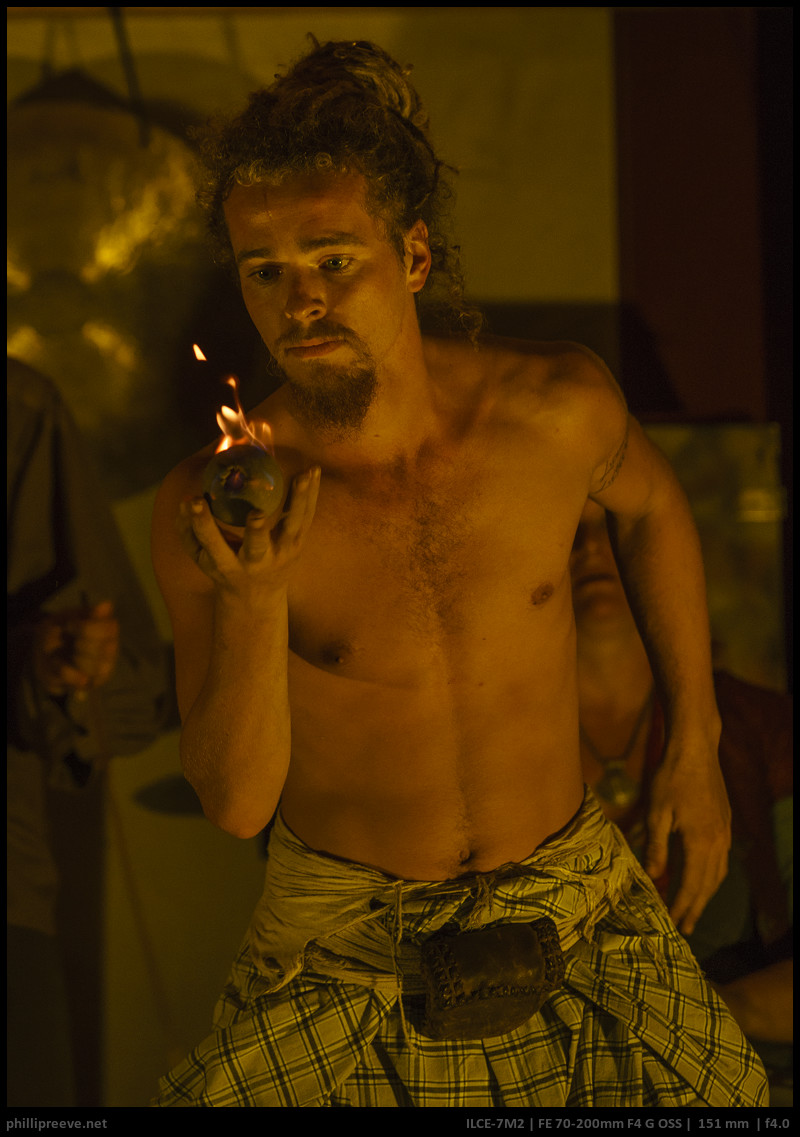
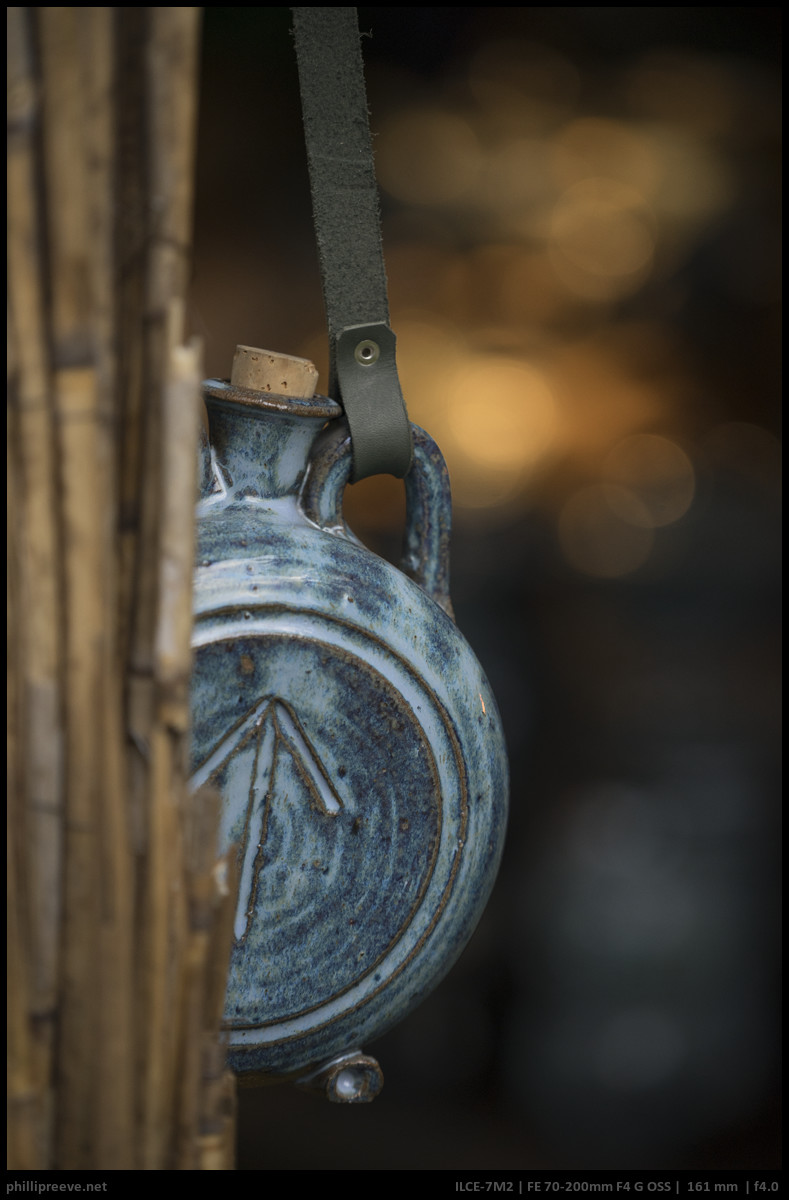
Landscape
As a landscape lens the Sony FE 4/70-200 is a bit more limited in my opinion because it does not deliver quite the across-the-frame-sharpness of a good prime and it is also quite heavy to carry around longer. On the other hand it is quite versatile and covers a wide range with good quality and the weight is still manageable so it is Sony’s best zoom for this purpose if you ask me.
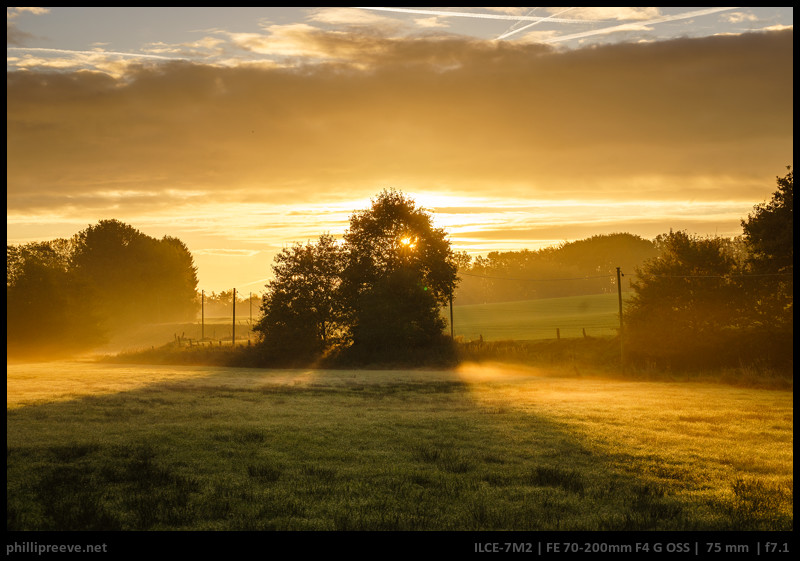
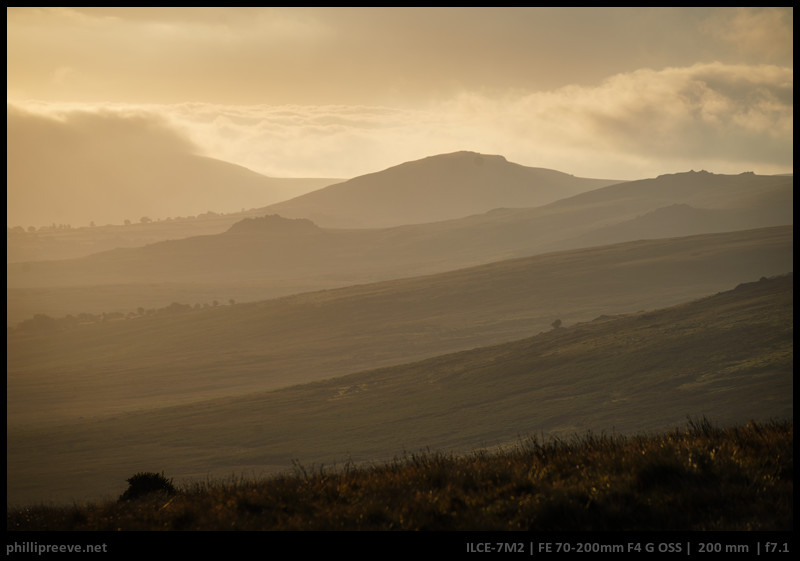
Sports
For a more detailed discussion see the AF section. Here the rather slow aperture of f/4 can be an issue but image quality and AF are top notch.
Alternatives
Sony FE 2.8/70-200 GM OSS: The much more expensive f/2.8 version’s most important advantage I see is the extra stop. It certainly can make a big difference when you shoot in low light or you want to isolate your subject a little more. Optically the GM seems to be a bit sharper in the center and a little less sharp in the corners. For that the GM is nearly twice as heavy and more than twice as expensive.
Canon EF 4/70-200: This much cheaper lens is optically about as good as the Sony if not a little better and with adapters like the Sigma MC-11 is offers decent AF on you 2. generation a7 but it won’t give you all the features like eye AF. There is also an optically slightly superior IS version which is more expensive but still more affordable than the Sony.
Canon 2/135: Of course not as flexible but optically superior with great bokeh and a much higher blur potential.
Zeiss Batis Apo 2.8/135: Technically the most perfect native E-mount lens at the moment. It is a stop faster and more portable but of course very expensive and not as flexible as the Sony. Sharpness is no contest: The Zeiss is as sharp across the frame from f/2.8 as the Sony never gets but you need to print really big to see that difference.
Conclusion
pros
|
average
|
cons
|
The Sony FE 4/70-200 is a jack of many trades but a master of none. For most applications the sharpness is very good, only the corners are a bit softer but still good enough for most applications. Bokeh again is usually good but not great and f/4 limits the amount of blur you can get. The Sony also shows very little CA and a good flare resistance. Only distortion is rather high but easily corrected. So I was usually quite happy with my results and thanks to the wide zoom range and quick AF I could cover a wide range of applications. The solid build quality should also be mentioned.
Since the OSS isn’t very effective I expected too much of it in the beginning and lost a few images because of it and I think the competition delivers better results here. A common annoyance with Sony FE lenses is the sluggish manual focus. I also found that I didn’t take the lens with me as often as I had anticipated because of the size and weight.
All in all the Sony FE 4/70-200 is a very capable lens which delivers a very good optical performance in most situations.It is built well and its AF is very quick. So if you need a flexible tele zoom be assured that the Sony usually will deliver good images only limited by the modest aperture. The price is a bit high compared to Canon’s offerings but not expensive compared to Sony’s other FE lenses.
The Sony FE 4/70-200 G OSS sells for $1498 at amazon.com or for 1249€ at amazon.de (affiliate links).
If this review was helpful to you, please consider using one of my affiliate links or to share the review. Thanks ?
Images Samples in full resolution
You can find these images and more in full resolution in this flickr set: Sony FE 4/70-200.
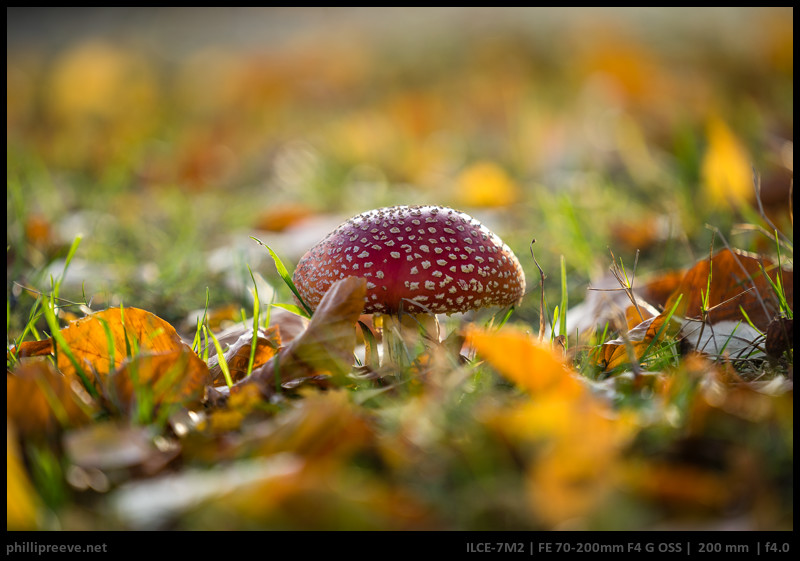
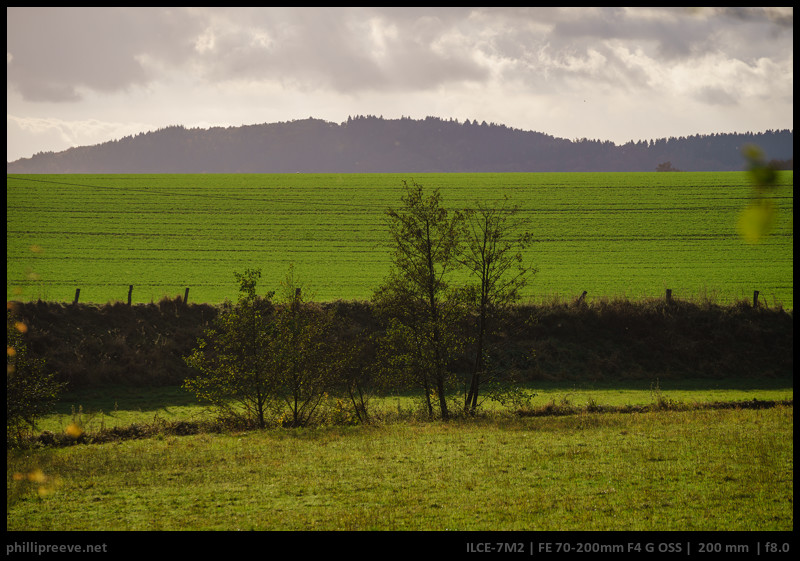
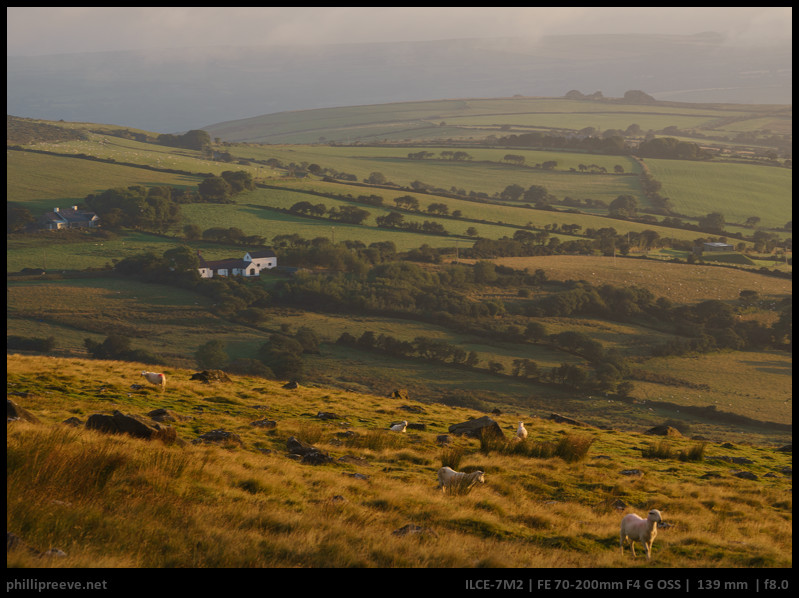
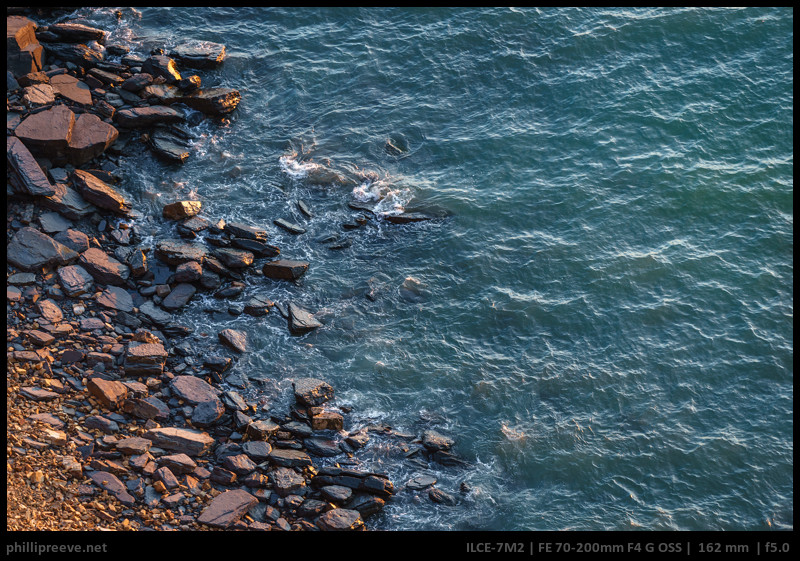
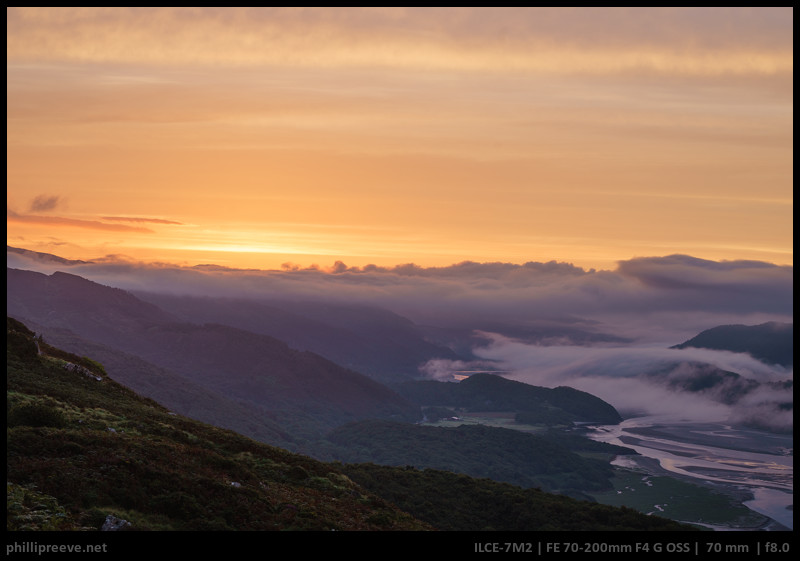
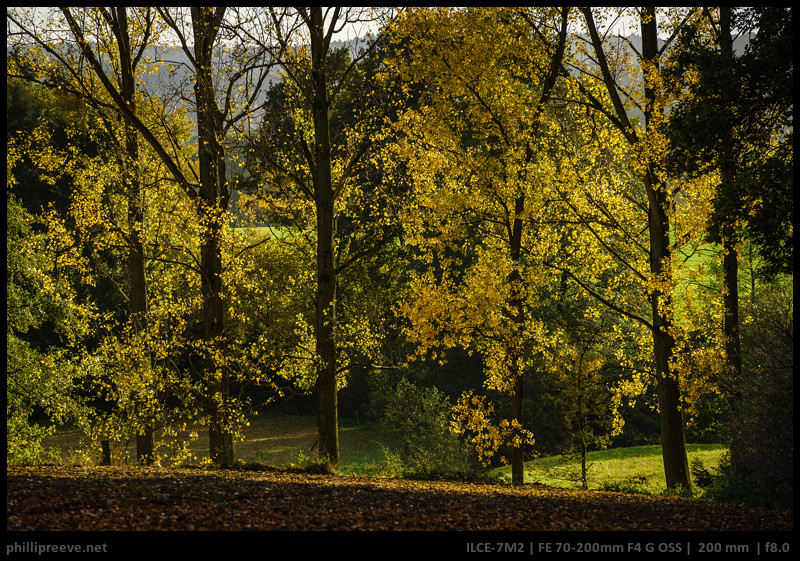
Other Articles
- Our Reviews of other E-Mount Lenses
- User-Guide to wide-angle lenses for Sony a7 a7ii a7rii
- Affordable manual lenses for the Sony Alpha 7,7r,7ii,7rii and 7s
This site contains affiliate links. If you make a purchase using any of the links marked as affiliate links, I may receive a small commission at no additional cost to you. This helps support the creation of future content.
Latest posts by Phillip Reeve (see all)
- Review: Samyang AF 75/1.8 FE - April 12, 2021
- The FE-List now has 113 lenses on it - March 25, 2021
- 2020 – Year’s end review - December 28, 2020
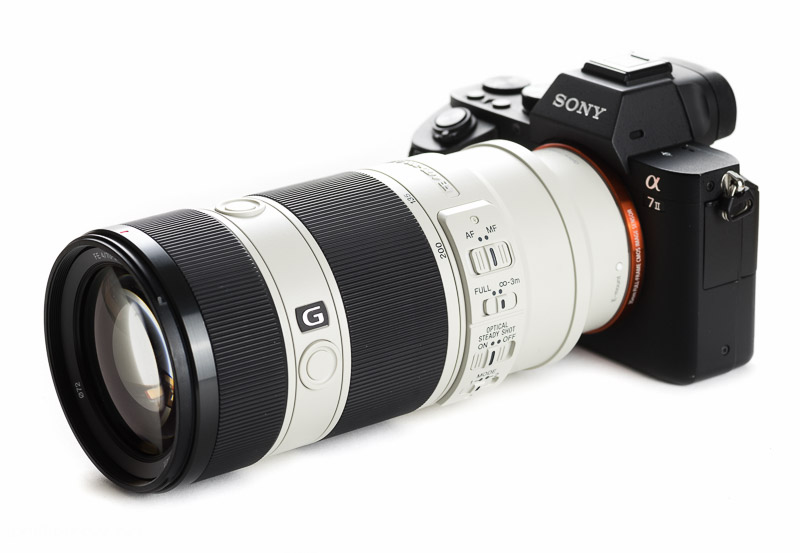
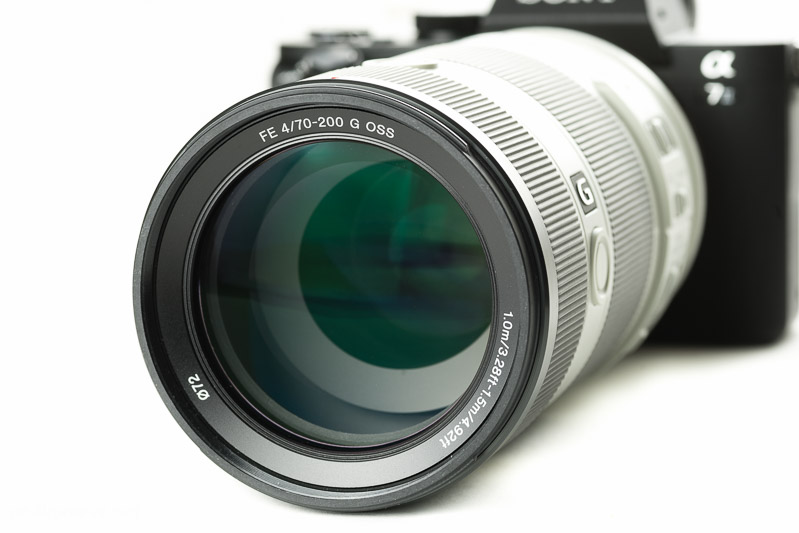




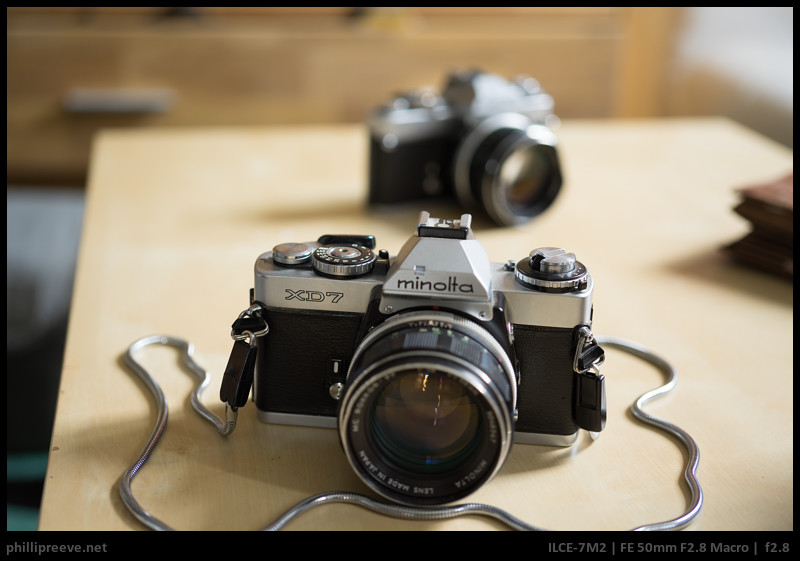



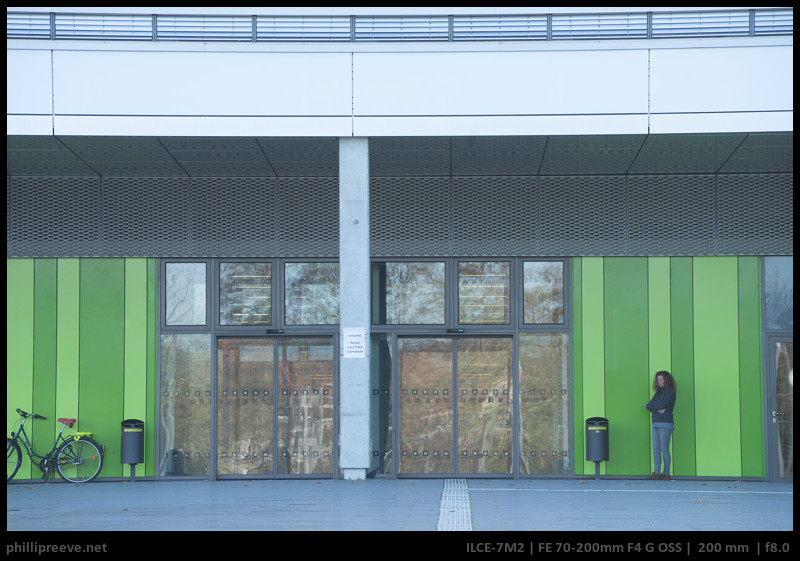
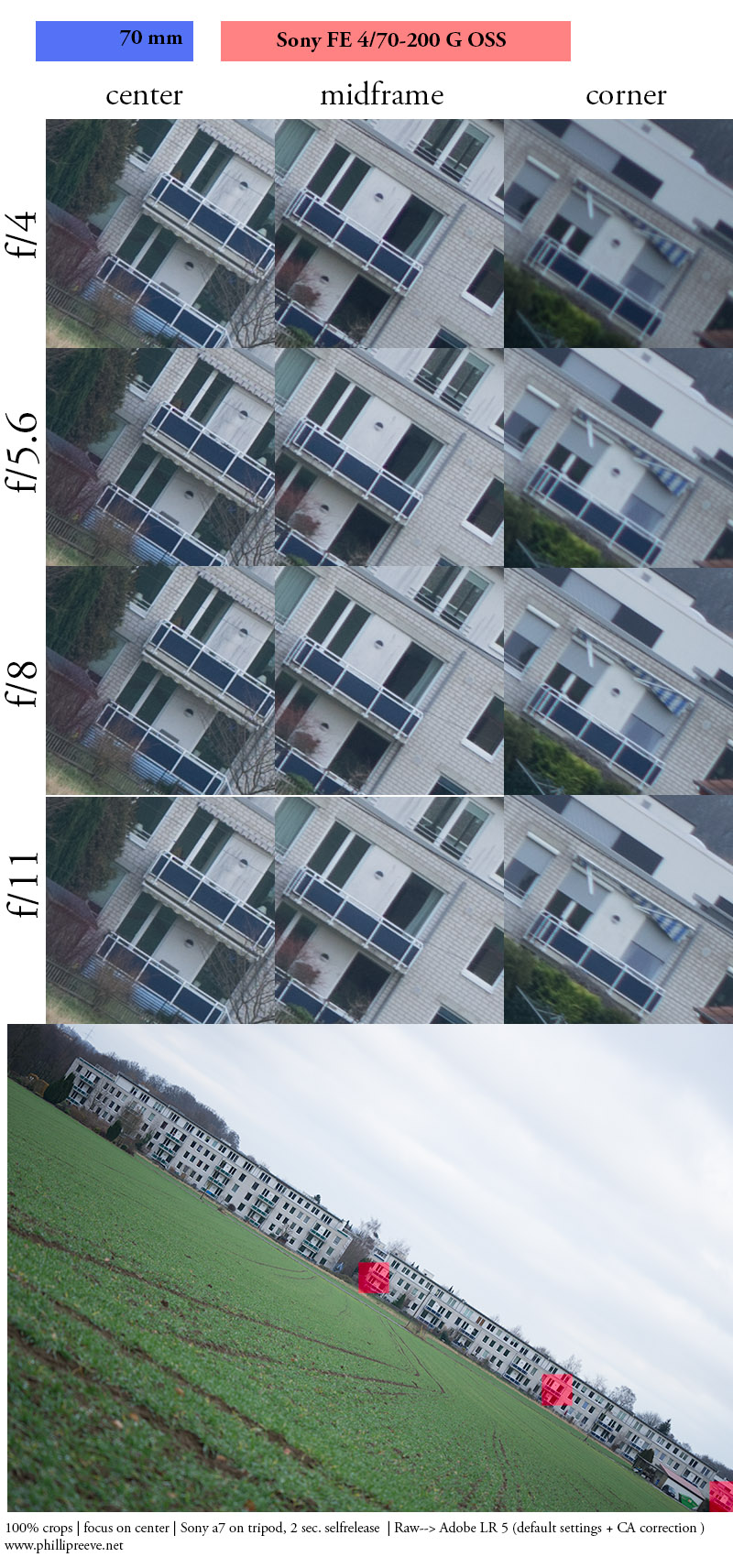





Thanks for the review.
I can add: yes, the hood does work in eliminating veiling flare.
Since I own only APS-C cameras, the corner sharpness of the lens in cropped mode is very good and I find this lens is an excellent landscape lens. For the consistency of results, it’s my favourite landscape lens (the SEL1670Z is another excellent focal for landscapes, but it delivers inconsistent sharpness).
By adding a Marumi DHG 330 close-up additional lens it also turns into a pretty good macro lens for flowers or insects.
I’m personally “enjoying” only a specific annoyance: the tripod collar lock mechanism is getting loose. Since I usually carry the lens attached to a shoulder harness, I’m getting nervous about it. I’ve already dropped the lens once and split it in two parts (my dumbness, not a collar fault) and the repair cost was about 500€. Unfortunately, a replacement collar costs more than 200$.
Yes, the lens is a tad too expensive, but it’s usual for Sony stuff.
Many thanks for this very informative review.
I bought a 2nd-hand Canon EF 70-200m 4.0L USM to use with my A6300. Optically the results were first rate, as confirmed by your review and many others, but AF with a Metabones IV was a major disappointment. The lens wouldn’t auto-focus in “advanced” mode at all, so eye-AF etc. was impossible. Even in “green” mode the AF was very poor: at best very slow, especially when alternating between tele and close-up. Sometimes the AF locked up altogether. Low light AF didn’t work at all.
Finally I gave up and purchased the Sony. In most situations the optics seem to be just as good as the Canon, sometimes perhaps even better. And of course the AF is a dream. Tbh, I haven’t used manual focus much with this lens, because it simply hasn’t been necessary.
Considering the weight and bulk of both models, I find them useful only in specific situations. My “always-on” is the Sony 18-105 f/4.0. It performs well, if not brilliantly, in most situations, isn’t too heavy for longer expeditions, and on an APS-C camera the 105mm maximum range has proved more than adequate.
I’m interested to read about the Canon’s AF performance with a Sigma MC-11. Does it give the full range of focus options? Is it fast enough for moving subjects?
You needn’t go after the original hood in my opinion, I never use it because it’s way too big for my bag. I have bought a generic 72mm telephoto screw-in hood on eBay and use that all the time.
My sample has about the same sharpness characteristics as yours and I believe I have a fairly good sample, I have mine for almost 2 years now and it’s a focal length range I don’t want to be without. The 2.8/70-200 options are just too big and heavy for me and I don’t want to get into the rabbit hole of third-party AF adapters with non-Sony lenses.
I agree with you about the bad experience with manual focus. This focus-by-wire operation is bad enough as it is, but the two-speed behaviour makes it even a lot worse. Having to use it after working with the Loxia 2/50 is a big let-down…
Thanks for sharing your experience Ad!
Hi – I would be interested in finding out how the 70-200 compares to the 24-240. I usually use manual focus primes and the native Zooms would be for travel convenience purposes…
I have no experience with the 24-240, sorry.
The 24-240, while sounding like a super-flexible, is in fact a an uninspiring lump of glass. much better with a 24-105 and this 70-200. My second hand 24-240 died after 1 year so I’m possibly biased about it general, all round sh****ss.
Great and fair review, Philip. I was considering getting a Batis 135 f2.8 for my recent Iceland trip but ended up taking the FE 70-200mm f4 with me. I did use the 200mm end more than a few times. It’s really a trade of between the versatility/convenience/weight of a zoom and the sharpness of a prime. I may revisit the Batis 135 when the price becomes more acceptable (too me).
Thanks for the efforts.
Douglas
Thanks Douglas 🙂
If the Batis was half the price I would be very tempted. As matters stand I still need to find a light 135mm I really like.
Let’s see how the rumored Sony FE 135mm will be like! Hope it’s not too heavy.
Just tossing it out, but maybe a 2x teleconverter with the Voigtlander 65/2? Would only be f/4 but I suppose that’s as small and light as you could get if that’s the kit you’re going for…
In any event, please let us know if you do find a suitable 135.
There is no E-mount TK that I am aware of which would work with the CV. And performance would certainly suffer if there was.
I’ll let you know 🙂
Thank you so much for this! I have been trying to decide on a tele for landscapes for quite some time now. Although it will be mildly cumbersome I think this will be my choice over the 2.8GM and primes like an 85mm or a 135mm. I truly appreciate how much time you all put into these reviews.
You are welcome 🙂
I’m still debating whether to get this or the f/2.8 GM. You can use the teleconverters with the GM but not the f/4. I’ve rented the GM and tried the f/4 in a shop. The GM is a massive and heavy beast that wasn’t fun to carry for a long time, but it’s a tad better for low light and image quality is spectacular. If only the teleconverter worked with the f/4, I probably wouldn’t debate it as much. 🙂
From what I have seen so far I don’t think that the GM has enough of a resolution reserve to actually give significantly more detail with the TK 1.4 than a crop would give you.
I’ve seen people comment that the 1.4 yields better results than the 2.0 teleconverter, however my interest lies with the 2.0 for the extra reach. I can crop further on both my A7R2 or A6300, but I will probably have to live with some decrease in image quality. But I really think that having a 70-200 I can turn into a 140-400 is a great option that just isn’t possbile on the f/4. The money though. 🙂
I wish this tele had 1:4 macro, no onion rings and a black version then it could be perfect for me with f4:/
Now I’m using 70-300G with LAEA4 and I am really happy from the results. But when it becomes darker with first gen A7, no OSS, worse f stop and LAEA comsuming light it becomes hard to use without heavy tripod…
But with the adapter it costs 1/3 of the FE version so I can live with that, I think that it’s best cost-performance tele for FE now;]
It’s a pity that sony has not made 70-200/4G A version, there is only mediocre (for nowadays standards) minolta’s beercan…
Great review, thanks Philip ! Very detailed and instructive.
As to the lens’s application in animal photography, have you heard of any way to add a 1.5x or so converter to the lens ? I heard that Sony’s converters for the 70-200 2.8 cannot be used on the 70-200 f4, which I do not understand and which I find very VERY annoying ^^
You could use a higher pixel density camera like the a6500 but there is no way to use a teleconverter.
I bought a 2nd-hand Canon EF 70-200m 4.0L USM too and I disagree with your findings . I compared it to the Sony 70-200/4 and the Sony was way superior especially in the corners but also for midframe. This was true for every focal lenght. Maybe the Canon 70-200/4 IS is better but there are lots of people who find that the design of the Canon 70-200/4 non IS is a little dated and have problems with the corners on full frame. Maybe my Sony 70-200/4 is better than your copy or the tested Canon was a lemon. But in my experience it is not recommendable over the Sony. At least for me the optical performance of the Sony is worth to pay double the price over a used Canon 70-200/4 USM.
Do you have any tests online?
My old copy of the Canon EF F4 70-200mm non-IS is satisfactorily sharp enough in the corners and I’d agree with both DXOMark:
https://www.dxomark.com/Lenses/Canon/EF70-200mm-f-4L-IS-USM-mounted-on-Canon-EOS-5DS-R__1009
and Imaging-Resource to its performance:
https://www.imaging-resource.com/lenses/canon/ef-70-200mm-f4l-usm/review/
No. Unfortunatly not.
Phillip, thank you for this detailed review. One thing I don’t understand though regarding the focus stop buttons:
“There are also three focus stop buttons on the lens which you can reprogram to something more useful like eye-AF.”
How can I reprogram them?
In the same menu you customize your camera’s buttons
Thank you.
Thank you for this helpfull review. Me and my wife will went to the east coast of Greenland while polar winter in early 2018. And we are looking for a telezoom like this one . Maybe your review help for dessicion. But I own an old Minolta “Beercan” 4.0/70-210. I used it with realy good results at my different Sony Alpha A cameras. Do you ever used this combination with the LA-EA4 Adapter?
I have used it on the LA-EA4 and while it worked okay the FE 4/70-200 is a much better lens optically as well as handling wise.
You’re missing out on the hood, Phillip! It’s such a big lens hood that I sticker-bombed mine! Sharing on my journal asap 🙂 It will be all the rage. PS I adore this lens 🙂
Is there a teleconverter for this lens
Nope.
Do you think the Sony 2X Teleconverter (SAL20TC) would be compatible with this lens, using the LA-EA4 adapter, on my Sony A7II?
This is a E-mount lens so it won’t either fit the LA-EA4 or the SAL20TC.
Im considering getting the FD 80-200 F4L instead of the FE 70-200 for Landscape photography. I am hoping it will be suited better as long as i can get a hold of a copy that has sharp corners. What is your opinion on that subject? What are the chances?
My copy had ok corners at 135mm but not at the ends. It wasn’t well centered though so I don’t know how much better a good copy would be.
Hi there,
Im planing a trip to Namibia with high potential for great landscape and wildlife shots.
I will use my A7 and could bring the following FD lenses
– FD 20mm 2.8
– FD 24mm 2.8
– FD 35mm 2.8
– FD 50mm 1.4
– FD 85mm 1.8
– FD 300mm f4L
But i am also willing to invest up to 1500EUR for more (used) Gear.
Because we are 2 persons i am planning to get another APSC camera (A5000/6000) for potential 450mm f6 manual possibilities and casual use (probably with 16-50 or 55-210) for my partner, pricetag 125-700EUR.
Still i’m looking for a telezoom for the A7 that is useful on the APSC body too, so i was thinking about getting the Sony FE 70-200 (used 900-1000EUR).
What are your thoughts on that, do you see any flaws in the Kit? I kind of lack a macro lense, so the FD 80-200F4L is kinda attractive still (might have to infest >300EUR in that though).
Which camera do you use? A7?
yes, A7 Mark 1
the slow AF on A7M1 is kind of the reason i tend to get the A6000
In that case the 4/70-200 makes sense I think because you would benefit from the OSS and decent but not great AF. The Canon 4/80-200 L is a fine lens but I don’t think it offers very good value at current used prices. When I got the 4/300 L I used it less and less so that I sold it in the end.
The original hood is fragile. I dropped mine once on concrete and it cracked. Its still useable as i taped the crack, but i was kind of disapointed at its robustness
Need suggestion Sony FE 70-200 F4 vs Sony FE 70-300 F4.5-5.6
My primary need is landscape.
I can purchase tripod mound for Sony Fe 70-300.
hey dude i want to ask, i use A7RIII. I am confused to decide which lens I will take between the FE 70-200 or FE 70-300. in your opinion which lens is suitable for landscape?
thx
Both lenses strength is flexibility and both are suitable for landscape but only if you moderate your demands to a degree. The GM 100-400 is significantly sharper so if you print big often you probably won’t enjoy them that much.
Hi and thank you for your great site and many detailed reviews.
Any chance you share a taste of the Tamron 2.8/70-180 in the near future ? I’m looking for a compact 70-200 and undecided between the G 4/70-200 and Canon L 4/70-200+ adapter, for an A7 III. Until I saw a few enthousiastic reviews of the new Tamron, and liking the idea of f/2.8 with what seems to be great IQ on a small package.
Would be used for sports / events.
So far none of us has that lens on the shopping list, therefore you should not expect a review too soon.